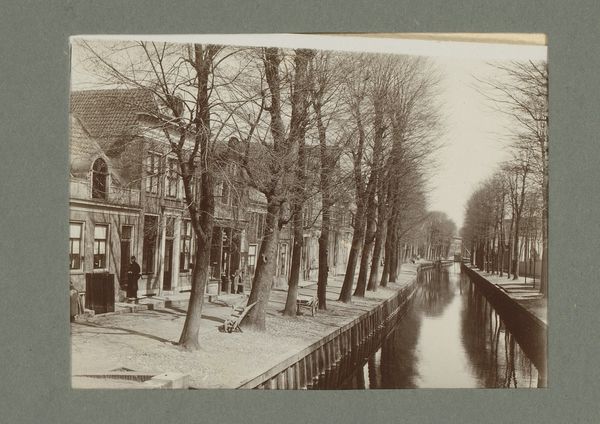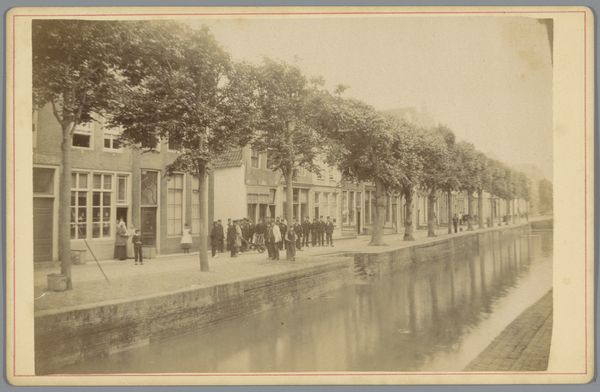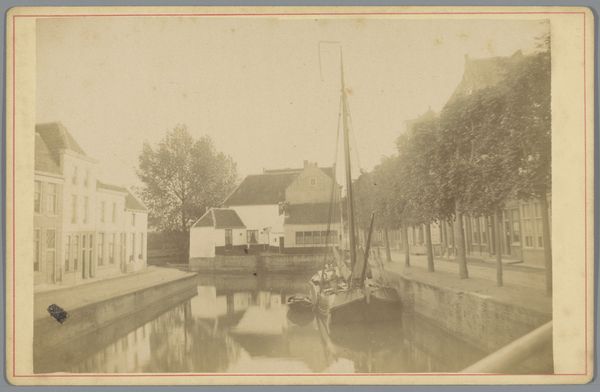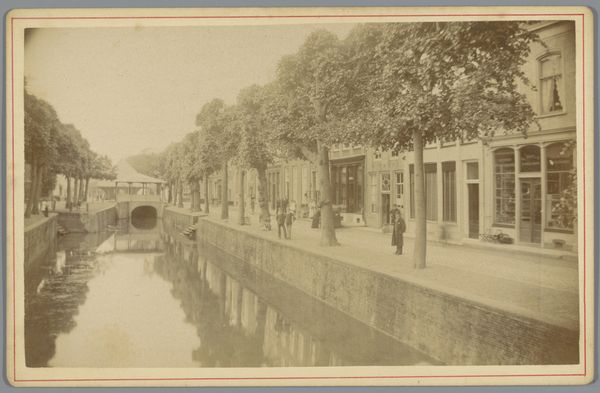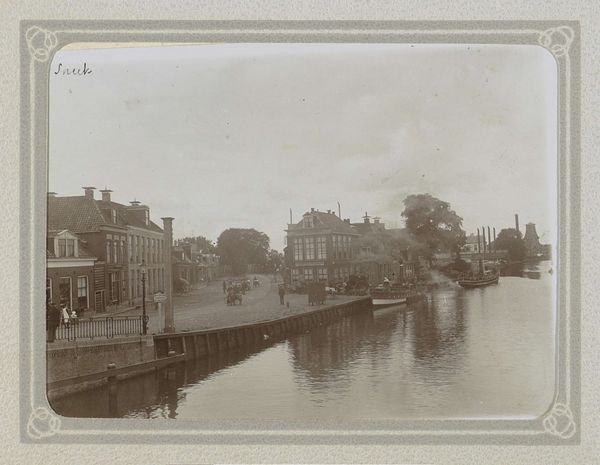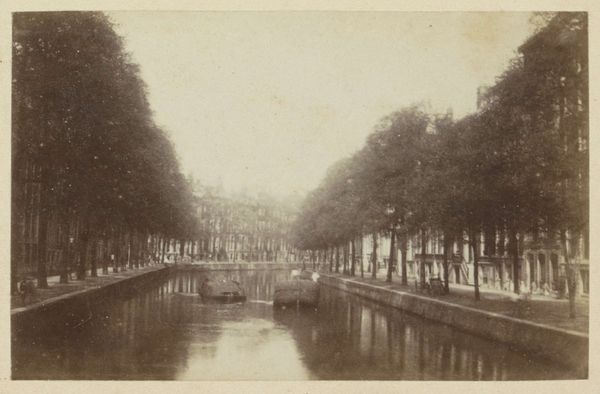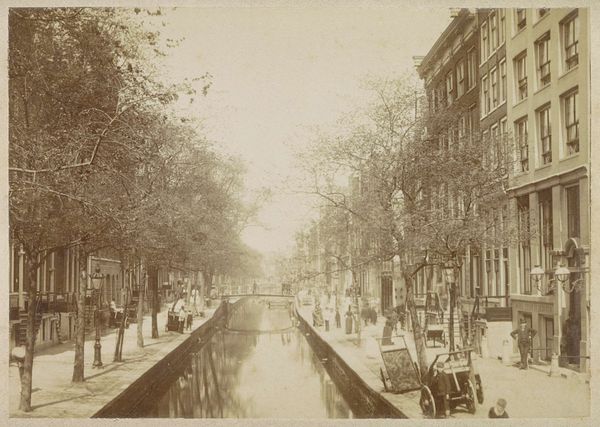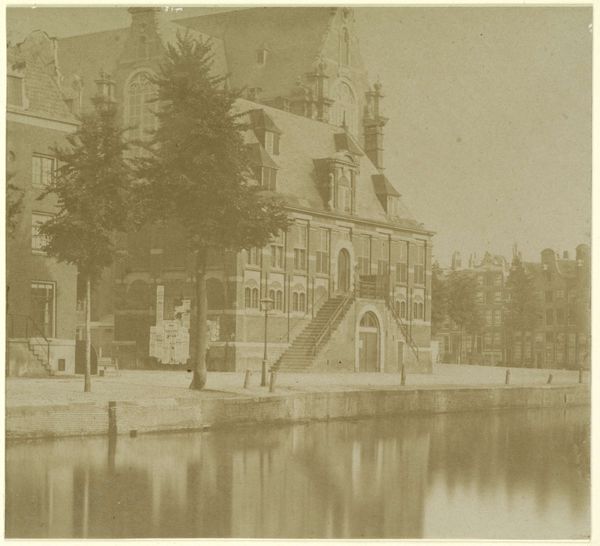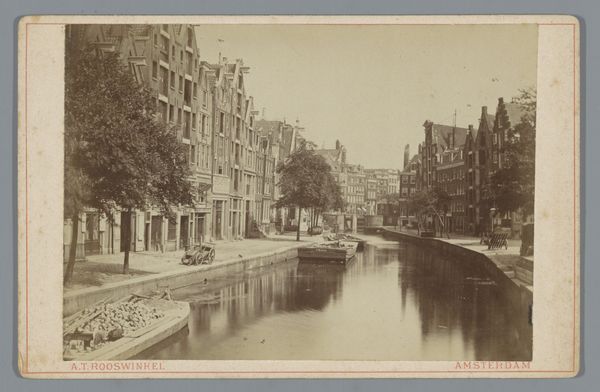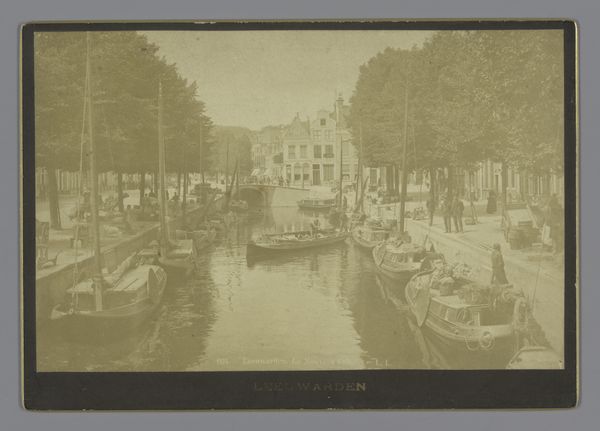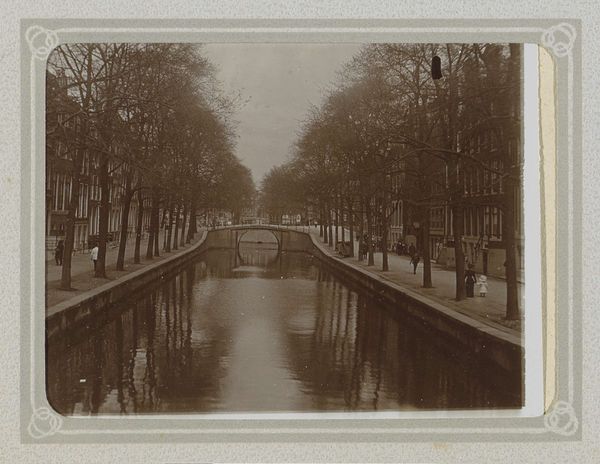
photography
#
landscape
#
photography
#
19th century
#
cityscape
#
watercolour illustration
#
watercolor
Dimensions: height 108 mm, width 168 mm
Copyright: Rijks Museum: Open Domain
Curator: This sepia-toned photograph, titled "Waag en Oude Haven te Schoonhoven", captured in 1882 by Lodewijk Hendrikus Serré, presents a serene view of a Dutch cityscape. Editor: My first impression is that it evokes a certain quietude. The muted tones and placid canal give the scene a dreamlike quality, almost frozen in time. Curator: Indeed. Serré was working in a period acutely concerned with documenting the quickly changing urban landscape. The image functions as an archive of Dutch history, a testament to architectural forms and waterways fundamental to the nation's identity. We see the "Waag," or weigh house, a public structure indicating Schoonhoven’s importance as a trading center. Editor: And it isn't just architectural. These images can tell us a lot about social norms too. Note how people seem to occupy very particular and formal spaces within the frame, almost posing self-consciously within the documentary aspect. Gender, class – it is all subtly conveyed in the arrangement of figures. The inclusion of what seems like the military also reveals this moment in time and all of its intricacies. Curator: Absolutely. Consider the politics of imagery present here. The architecture, with its roots in civic governance, subtly speaks to ideas of national pride during a time when many European nations experienced nationalist movements. Editor: Yes, and by focusing on the architecture, particularly structures such as bridges, that invite flow and circulation, we see a subtle celebration of mobility. One must wonder about Serré’s access, too; the photographic vantage point gives him a certain sense of authority, and one should question if that affects the image itself. Curator: Excellent point. Now, let's also not overlook how the choice of medium – photography – lent a perceived objectivity to the scene. People then likely viewed this image not just as art, but as an authentic representation of their surroundings. Serré's piece participates in, as well as influences, the cultural construction of this particular locale in Dutch collective consciousness. Editor: It certainly invites a deep pondering about the dialogue between preservation and transformation, and this work helps us consider our role as viewers in either. What do we extract from these quiet yet poignant glimpses of a time gone by? Curator: Precisely. In just a brief encounter, we've illuminated the complex layers embedded in this ostensibly simple landscape. Thank you for bringing that unique perspective.
Comments
No comments
Be the first to comment and join the conversation on the ultimate creative platform.
